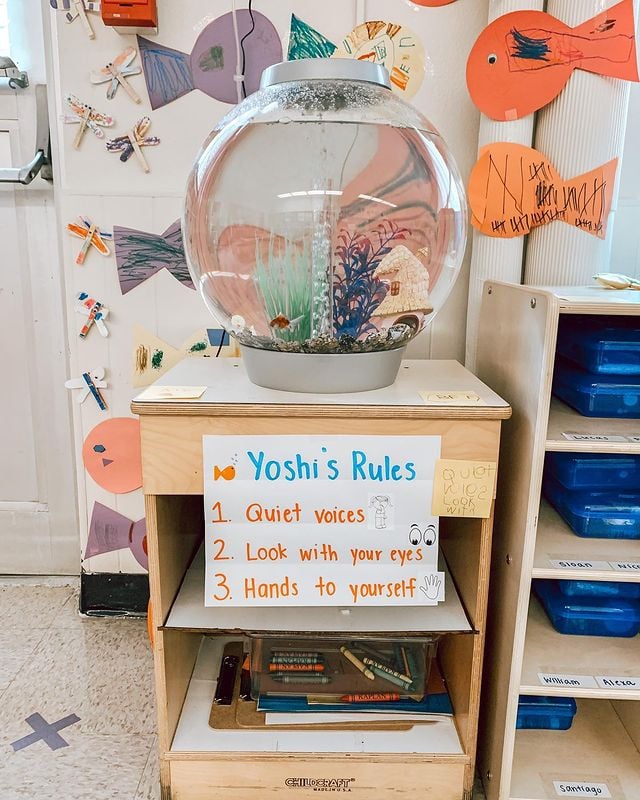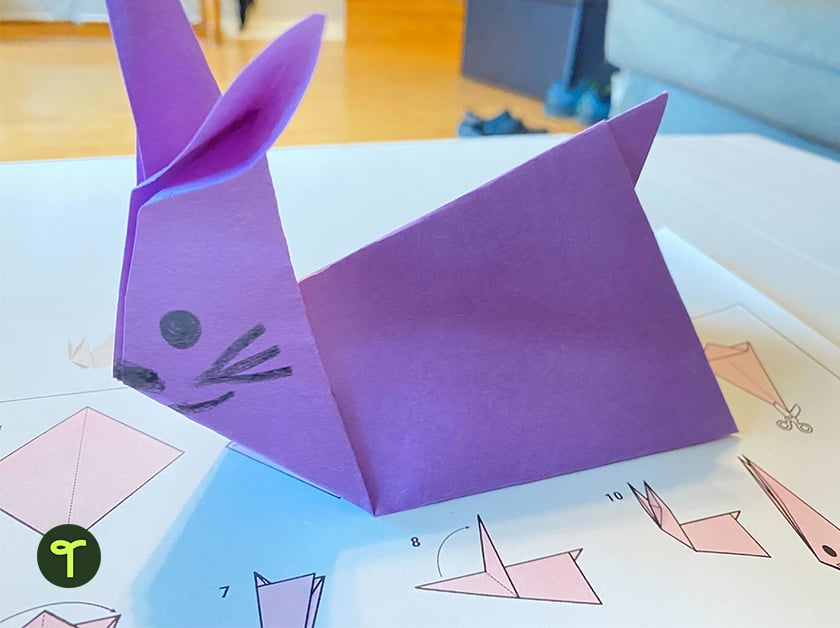Class pets are far from new — from hamsters to frogs to fish, animals have been showing up in the classroom as both a teaching tool and non-judgmental friends for elementary schoolers for decades.
But if you’re debating a classroom pet, you’re probably wondering a few things: Are class pets a good idea? What is a good class pet? And heck, what is the easiest pet to have in class?
You’ve come to the right place! Teach Starter is made up of a team of teachers who create classroom resources (you can even snag free printables from us right now!), and we have all had to dig into these questions for our own classrooms.
We put our heads together to talk through the classroom pet experiences that worked for us, the pets that just were NOT good for a classroom setting, and of course, drew on the extensive research we’ve done over the years to put together this guide to help you decide if a pet is right for your students, and if so, which one to choose! Read on to learn more about the best pets for your classroom environment as well as the animals to avoid (no matter how cute they are), plus some tips on getting grands to help pay for your pet!
What Is the Most Common Class Pet?
Before you add an animal that you’re going to have to be responsible for — ultimately anyway — you’re probably going to want to check in with other teachers on what worked for them, right?
It turns out the most common classroom pet is a fish, followed by a guinea pig and then a hamster, according to statistics from the American Human Society. Bearded dragons and geckos are also popular with rabbits, turtles, snakes, and lizards all making the list of common class pets.
Get a “turtle as a pet” template for teaching about persuasive devices!
Are Class Pets a Good Idea?
This is the sort of question you need to ask before you welcome any kind of pet — are you in it for the long haul? Even if you’re looping, you’ve got these students for a year or two max, and a class pet could live 2, 3, 5, or who knows how many years. So is it worth it to make this commitment?
Non-profit Pets in the Classroom, which provides grants for teachers to add a classroom critter (more on that later), surveyed more than 10,000 teachers who had received their grants and found that 50 percent of the teachers were using classroom pets almost every day as part of their curriculum. Not bad, huh?
And here are just some of the benefits you and your students may experience when adding an animal to the roll.
- Animals create authentic, hands-on learning experiences (like scrubbing fish tanks at lunchtime… ?).
- Caring for pets teaches compassion and responsibility — key elements of social and emotional learning.
- Students learn to develop awareness and respect for living creatures.
- Classroom pets can help anxious students, providing non-judgmental friendship or even an ear for listening to struggling readers as they become more confident reading aloud.
What Are the Best Class Pets?
Hamster
You can thank author Betty G. Birney for ensuring keeping a hamster as a classroom pet would never go out of style. Her Humphrey the Hamster book series is a teacher and child favorite as it follows the trials and tribulations of a class pet when the class departs for the night. Think of it as Toy Story but with an animal in a classroom.
Hamsters tend to make good classroom pets because they require little maintenance and are fun to watch. Lessons about hamsters can focus on everything from habitats (hamsters tend to live in burrows) to eating habits (hamsters are omnivorous). Hamsters are nocturnal, so be aware that they will likely not be awake throughout the day, and because they tend to fight with other hamsters, they should be alone in a cage. That said, Pets in the Classroom considers these a “beginner” classroom pet.
Teach Starter Teacher Tip: Read The Best Seat in Second Grade by Katherine Kenah to your class. It’s the hilarious story of what happens when you take the class hamster to the museum.
Axolotl
Beyond the glorious puns – somebody axoltl question, amirite? — these salamander-esque creatures from Mexico are fashionable on social media for good reason. This amphibious critter is extremely low-maintenance. They require a clean tank with good water quality, regular feeding, and occasional water changes. Unlike many other pets, they do not require regular walks or playtime outside of their tank.
Carnivorous in nature and as teeny as a teacup, an axolotl can live for over a decade — so you have fewer worries about coming into the classroom mid-year to find the class pet has left this world — and they’re easy to handle with no teeth to injure your students. Axolotls also offer plenty of learning experiences with feathery external gills and regenerative abilities that are fascinating for kids as they learn more about the characteristics of different species.
Axolotls are particularly valuable for the classroom because of their appearance in the popular Minecraft video game — allowing teachers to play on a real-life correlation.
Put good pet care center stage with a pet care comprehension task for 1st grade!
Fish
There are countless fish you can add as a classroom pet, and almost as many reasons as there are species to go this route! Not only are fish self-contained — ahem, you never have to worry about your kiddos handling them too much — but they also offer a soothing and tranquil addition to a corner of your room. You might even want to add them to your chill spot in your classroom! Students can learn about the unique biology and behavior of fish, as well as the importance of providing a suitable environment for their pet — in this case, a temperature-controlled tank.
Teacher Victoria (@msvsbusybees on Instagram) shared this fun set-up with us, including class rules she added on how to interact with your class pet!
Raising fish in the classroom is also a great way to teach children about life cycles, and you may even be eligible for outside funding to make it happen! Trout Unlimited, for example, gives funds to teachers to raise trout in the classroom to be released by students in waterways in the Northeast.
Add a fun “we’re all in school together” fish sign to celebrate your new additions!
Turtle
Yes, turtles can live for 100 years or more, depending on the type, so you need to keep this in mind before inviting your very own Dribble into the classroom. But whether you’re reading Tales of a Fourth Grade Nothing in class this year or you’re just looking for a very low-maintenance pet, a turtle can be a great pick. You’ll need a good aquarium and the ability to control its temperature — so be sure to check with school maintenance that they won’t shut off power to your room during a break — but you’re not going to have to take this pet for a walk at regular intervals.
Turtles in the classroom can open up conversations on the differences between reptiles and amphibians — they’re the former — as well as invertebrates vs. vertebrates.
Teach Starter Teacher Tip: Turtles can carry salmonella, so it’s important to ensure your students do not handle this classroom pet! If they do, make sure students immediately wash their hands.
Your Own Pet
No, we’re not suggesting you bring Fido or Peaches in from home. But a photo or cardboard cut-out that turns them into a class mascot can make for a lot of fun! Not to mention it’s good for class morale.
First-grade teacher Lisa Carnes, for example, shared this adorable 2D version of her corgi Finley who is now a part of her class!

One member of our teacher team has made a habit of asking students to submit photos of their own pets, which she will intersperse in her lessons throughout the year. Students may not be able to bring Fluffy to school, but they may suddenly see her make an appearance on a morning meeting slide!
Speaking of animals that don’t belong in the school building …
Worst Classroom Pets
As much as we’d love to bring our cats and dogs to school, we all know that’s just not going to cut it. And while would never say any animal is “bad” per se, and these are simply bits of information to keep in mind when considering “is this pet good for my classroom.”
Ferrets
Depending on your tastes, ferrets may seem adorable and perfect class pets. But not only are the critters known for biting — albeit small nips and play-biting that may be OK in a home setting but not so much in a classroom — they also have a distinctive musky smell that can permeate your classroom.
Chickens
They make excellent pets— yes really — and there’s the added science lesson that comes with their egg-laying, but chickens are not indoor pets. Not only do they need a ton of space to thrive, but chickens are notorious for making noise (the hens as well as the roosters), which is not exactly conducive to a learning environment. Even raising small chicks in the classroom with the intention of sending them to live on a farm is to be avoided as chicks require warming lamps that cannot be turned off when you head home on the weekends, and they too can make a ton of noise!
Birds
While we’re on the topic of chickens, it’s worth talking about their species in general. Although there is plenty to be learned from observing birds in the classroom, and they’re often highly intelligent, the CDC warns that many birds carry a host of diseases that may make you shy away when it comes to a class pet.
Rabbits
Although they’re small and seem easy to pop in a cage, rabbits aren’t really meant to be kept cooped up, according to folks at the American Human Society. They’re also not fond of noisy environments like a classroom.
Heart stuck on a bunny for the classroom? You could have students make their own origami bunny desk pets with this fun instruction sheet!
Lizards
They seem like their care is easy, but lizards tend to need very specific temperatures — which means leaving on a Friday and coming back to school on a Monday after the heat went out could be a big, big problem.
A Few Things to Consider Before Committing to a Class Pet
Those of us who have, or have had pets in the past, will know that it’s not really as simple as choosing a fish and creating a fish-tank cleaning roster for your students. Deciding to care for a class pet is a big decision and one that shouldn’t be taken lightly. As mentioned above, these living creatures will be depending on you, your students, and quite possibly other members of your class community, to provide them with a safe and comfortable life.
You will need to consider:
- What is the temperature like in your classroom when it is not occupied? If air conditioning or heaters are turned off when the humans leave, is the environment still okay for your pet?
- Who will care for your class pet over weekends and school break? Is the pet easy to care for if going home with students and their families?
- What is the lifespan of your class pet? Will it outlast your time as a teacher?
- Do the species travel well? Class pets can do a lot of travel!
- How much will it cost to feed and provide care for the pet, and who will pay for it?
- If you have more than one pet of the same species together, have you ensured they cannot breed?
- How will you cover the pet’s veterinarian bills?
Class Pet Grants for Teachers
In addition to Trout Unlimited, there are several non-profits that provide funding to teachers to help cover the costs of having classroom pets! Check out these funding sources:
- Pets in the Classroom — Gives yearly sustaining grants of $50 for classrooms pre-K through 9th grade to help teachers care for pets throughout the year as well as “rebate” grants for the purchase of class pets through PetSmart.
- Petco — The pet supply store provides grants to teachers to fund class pets.
- The Bee Grant — While you won’t exactly be setting up a beehive inside the classroom, there are pollinator grants that can help you set up hives outside on school grounds to help save the bees!
Tell us, have you ever had a class pet?
Share your experience in the comments below, and check out some of our animal-related teaching resources!
Banner image via shutterstock/morrowmind










Freshman from high school here. My biology teacher lets the bunny run around the room, always having the cage open. It can't get out of the room, but the entire room is free for it to run around. He even lets us pick her up and pet her when she comes near our desks. It has improved morale by a lot, but I need a second opinion. I want to be a teacher someday, specifically for high school. Is having a bunny roam around the classroom a good idea?